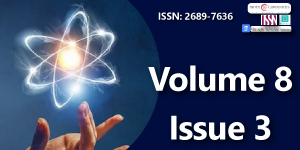Simple Proof of the Hardy–littlewood Conjecture
Main Article Content
Abstract
Abstract
The Hardy–Littlewood conjecture suggests that every odd integer 2n + 1 greater than or equal to 7 is the sum of three prime numbers, two of which are equal. In this paper, we present a simple approach that attempts to prove this conjecture.
Downloads
Article Details
Copyright (c) 2025 Chebba MA.

This work is licensed under a Creative Commons Attribution 4.0 International License.
Tao T. Every odd number greater than 1 is the sum of at most five primes. Math Comput. 2014;83(286):997–1038.
Hardy GH, Littlewood JE. Some problems of 'Partitio Numerorum.' III. On the expression of a number as a sum of primes. Acta Math. 1923;44:1–70. Available from: http://dx.doi.org/10.1007/BF02403921
Chen JR, Wang TZ. On odd Goldbach problem. Acta Math Sinica. 1989;32:702–718.
Aletheia-Zomlefer S, Fukshansky L, Garcia SR. The Bateman–Horn conjecture: Heuristic, history, and applications. Expo Math. 2020;38(4):430–479. Available from: https://doi.org/10.48550/arXiv.1807.08899
Helfgott HA. The ternary Goldbach conjecture is true. Ann Math Stud [Preprint]. 2015. Available from: https://arxiv.org/abs/1312.7748
Montgomery HL, Vaughan RC. Multiplicative number theory I: Classical theory. Cambridge: Cambridge University Press; 2007. Available from: https://assets.cambridge.org/97805218/49036/frontmatter/9780521849036_frontmatter.pdf
Granville A. Harald Cramér and the distribution of prime numbers. Scand Actuar J. 1995;1995(1):12–28. Available from: https://doi.org/10.1080/03461238.1995.10413946
Pomerance C. A tale of two sieves. Notices Am Math Soc. 1996;43(12):1473–1485. Available from: https://www.ams.org/notices/199612/pomerance.pdf
Nathanson MB. Additive number theory: The classical bases. New York: Springer; 1996. (Graduate Texts in Mathematics; vol. 164). Available from: https://download.e-bookshelf.de/download/0000/0017/29/L-G-0000001729-0002340718.pdf

